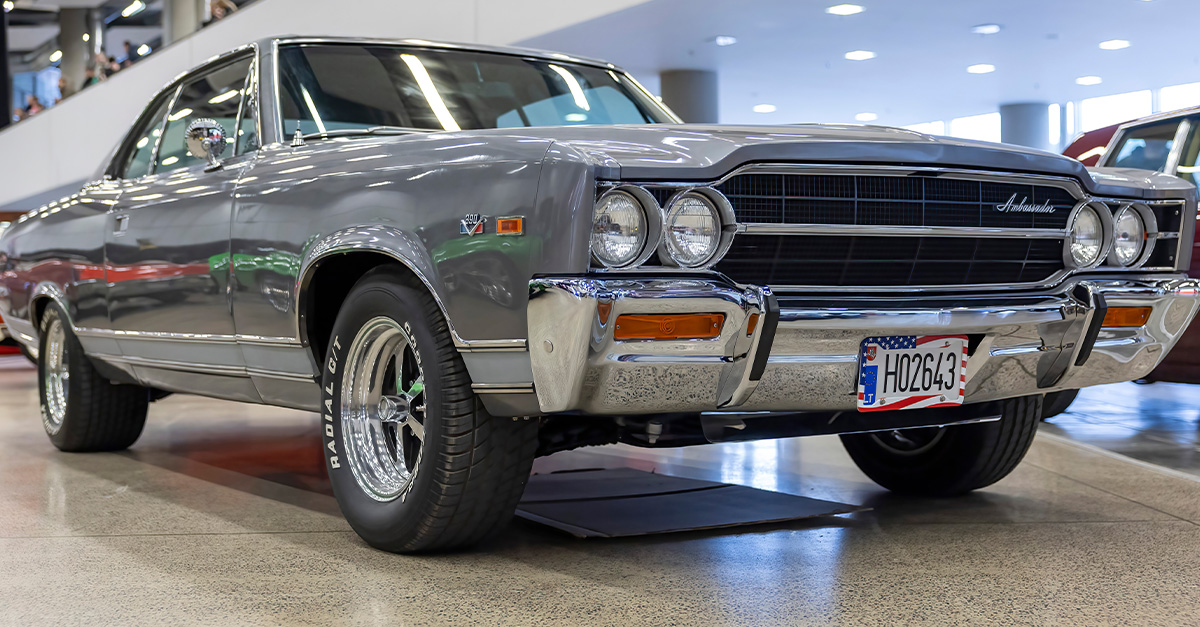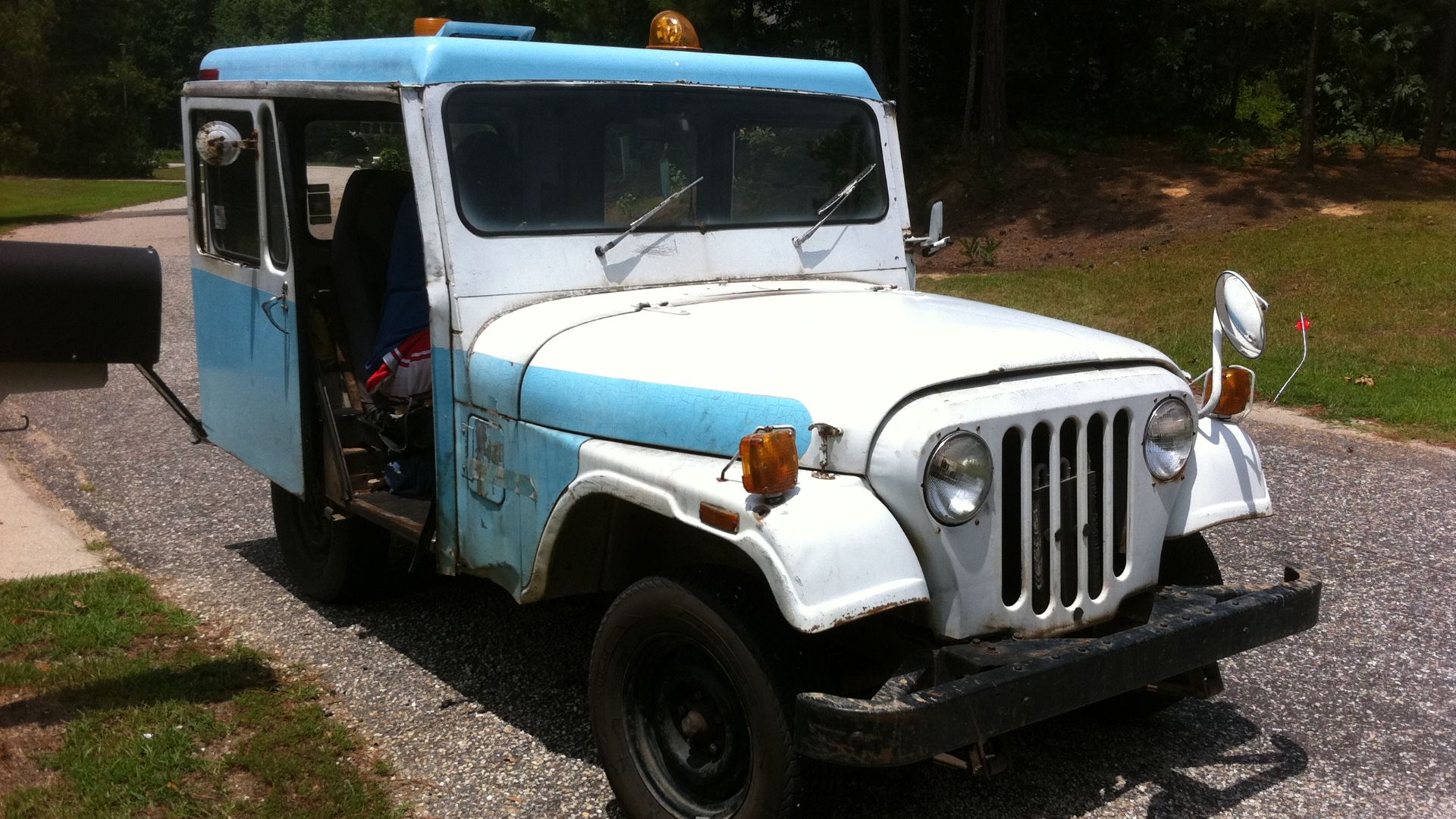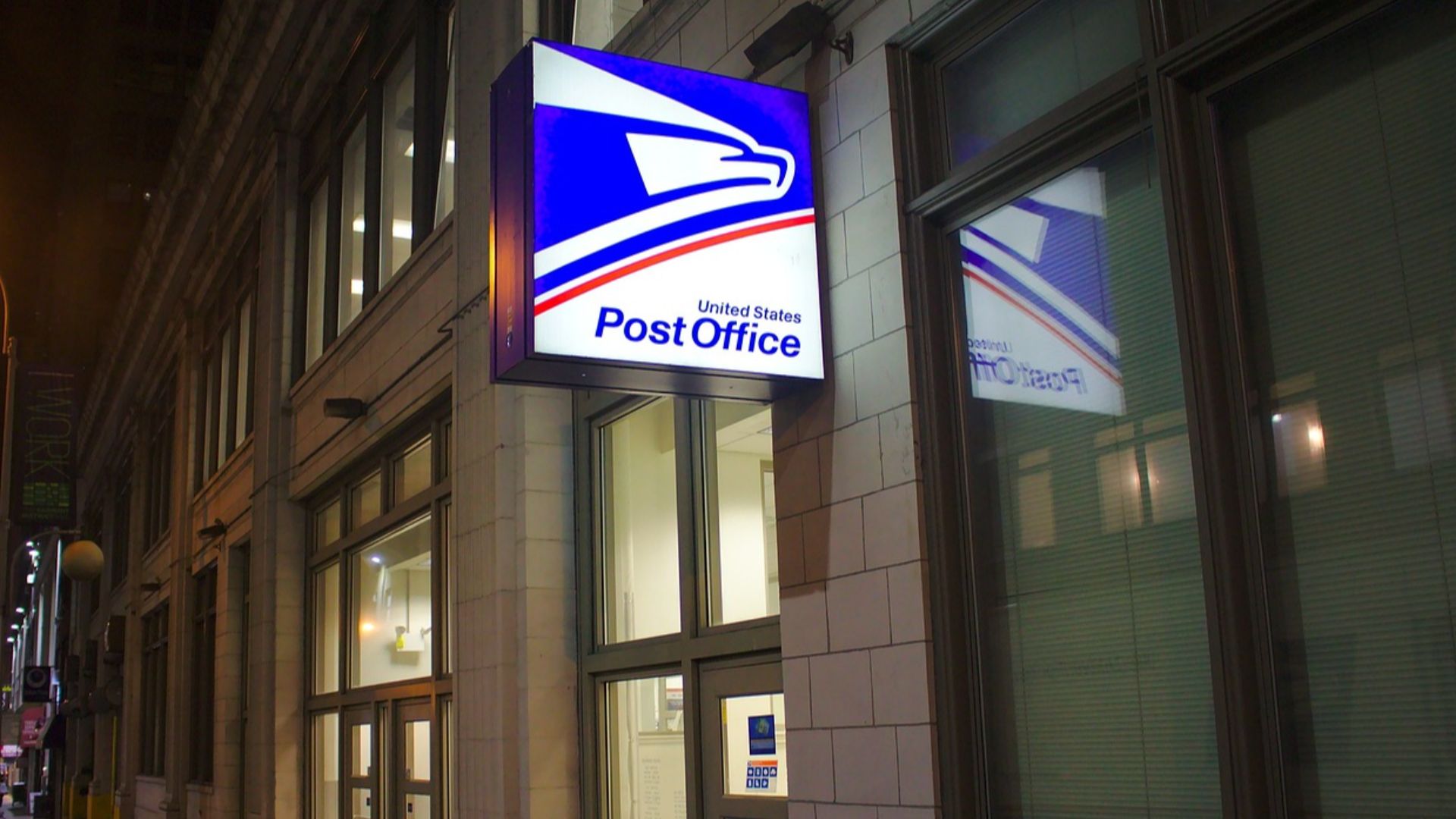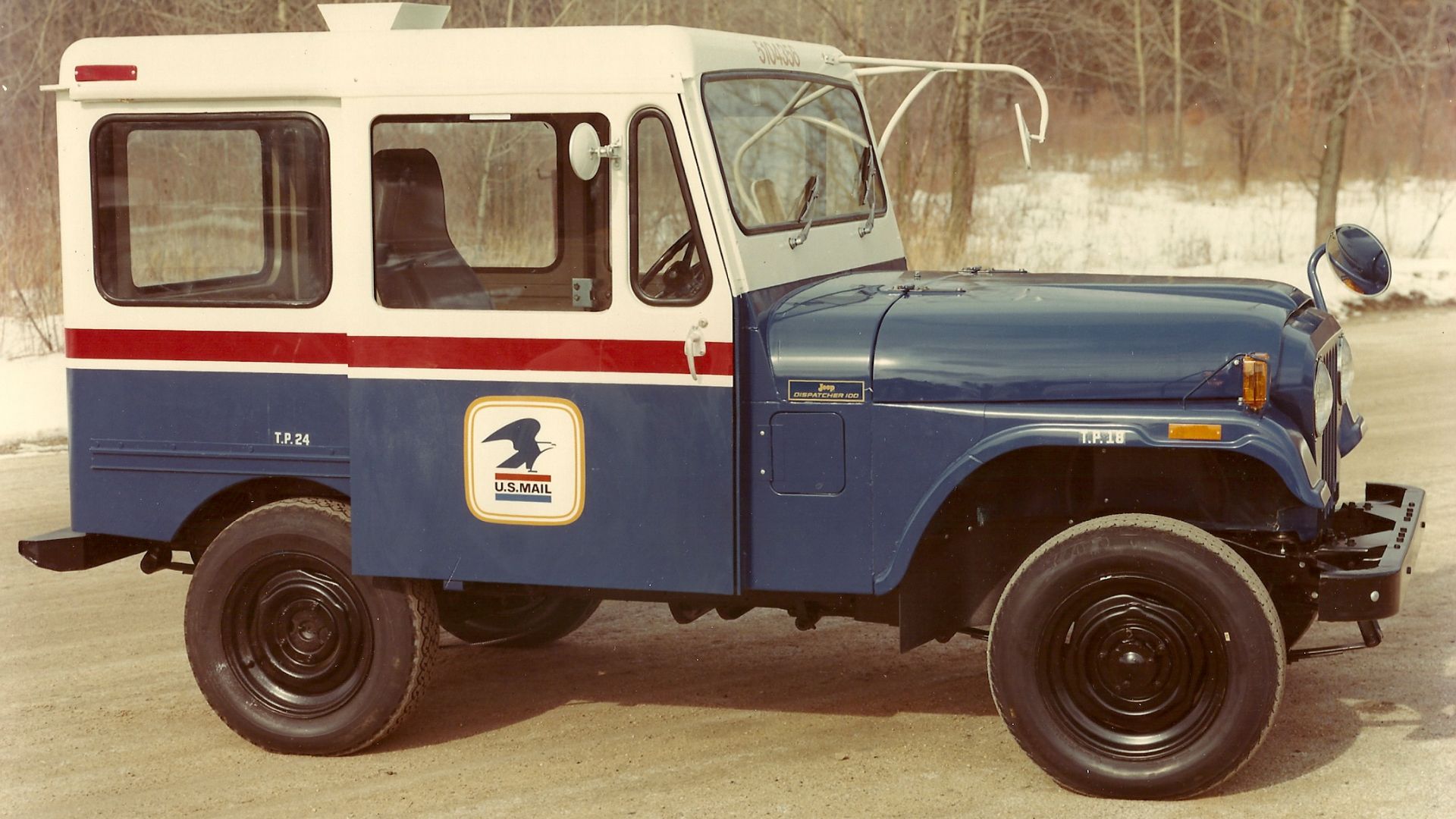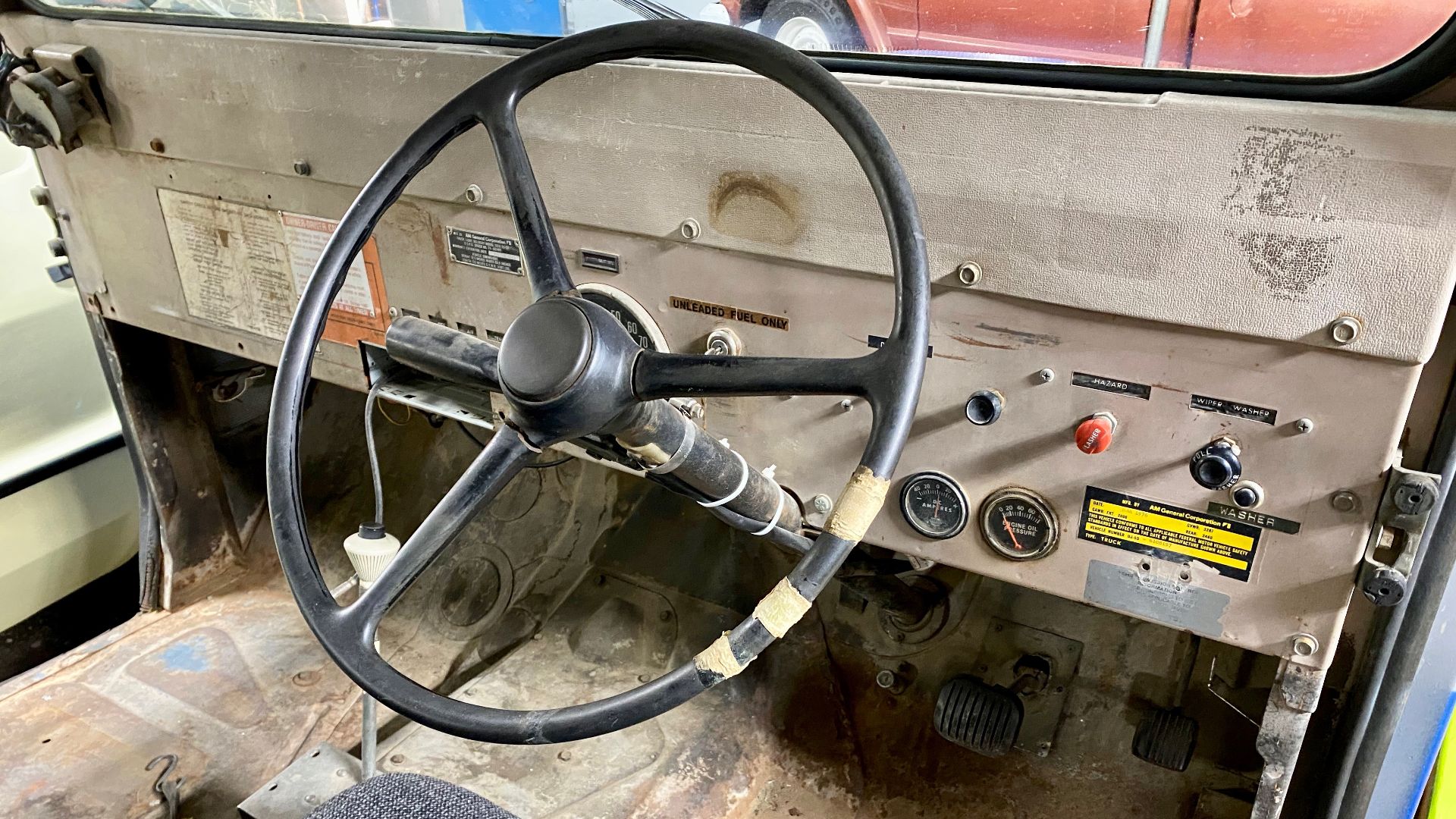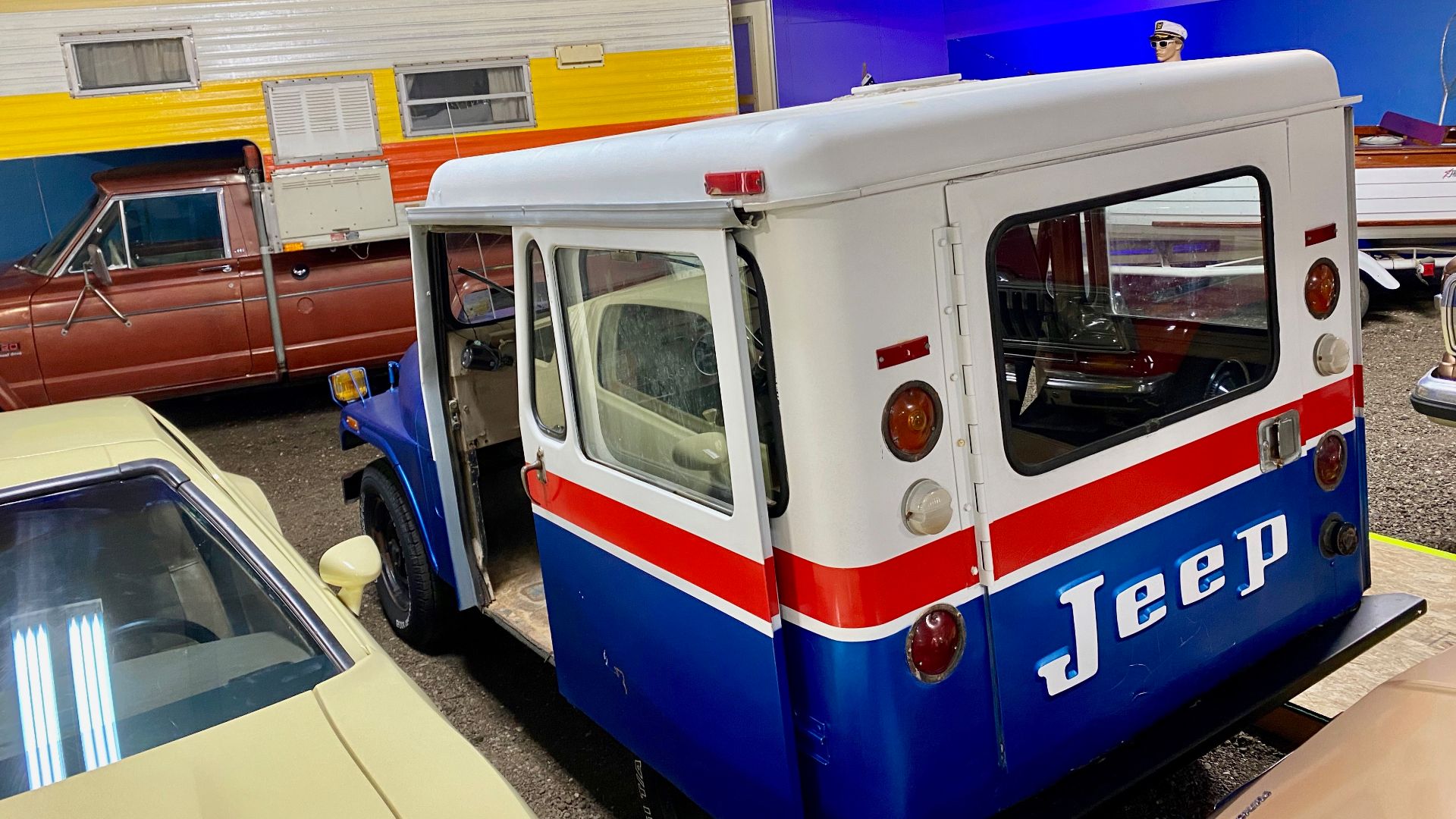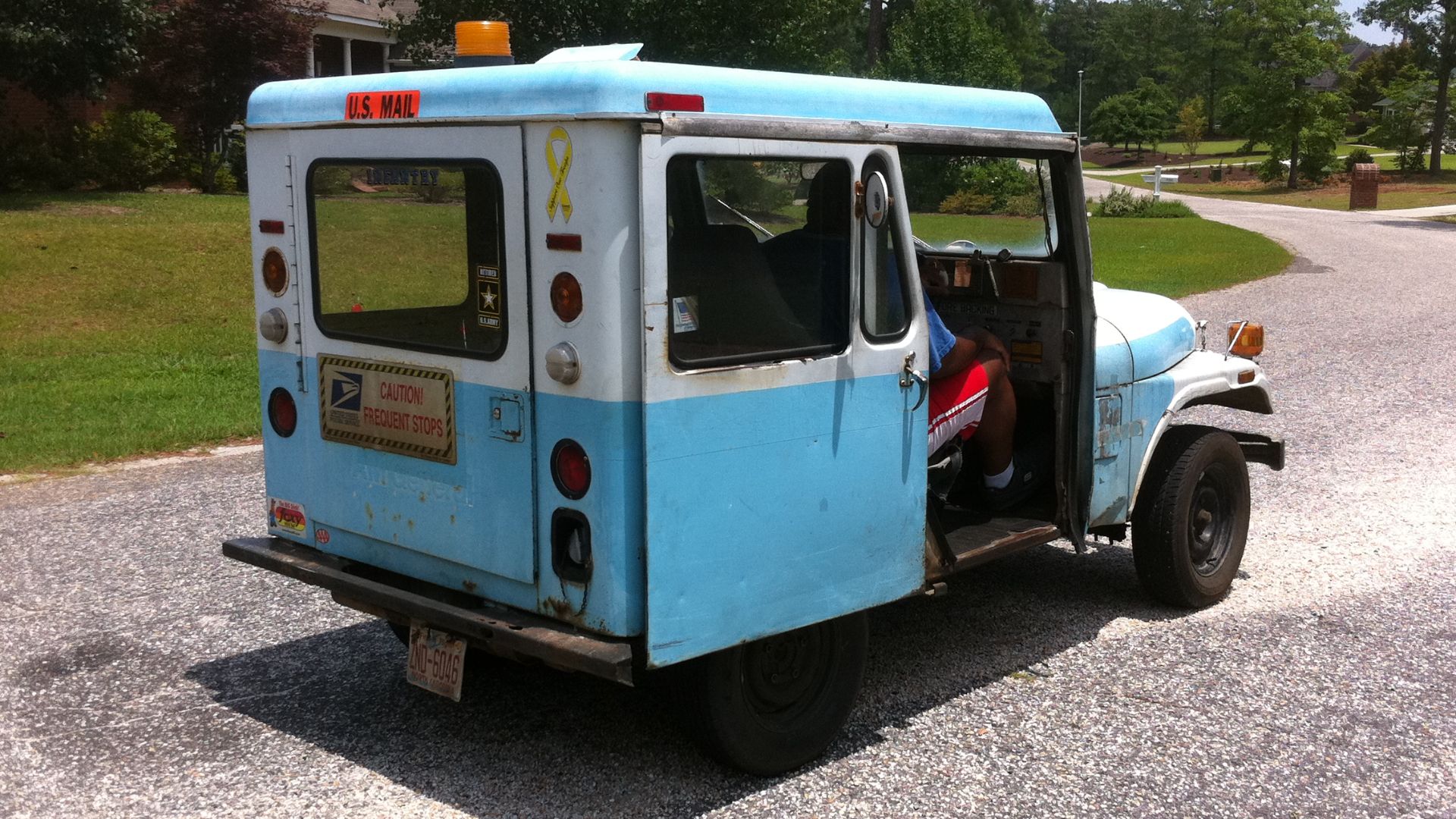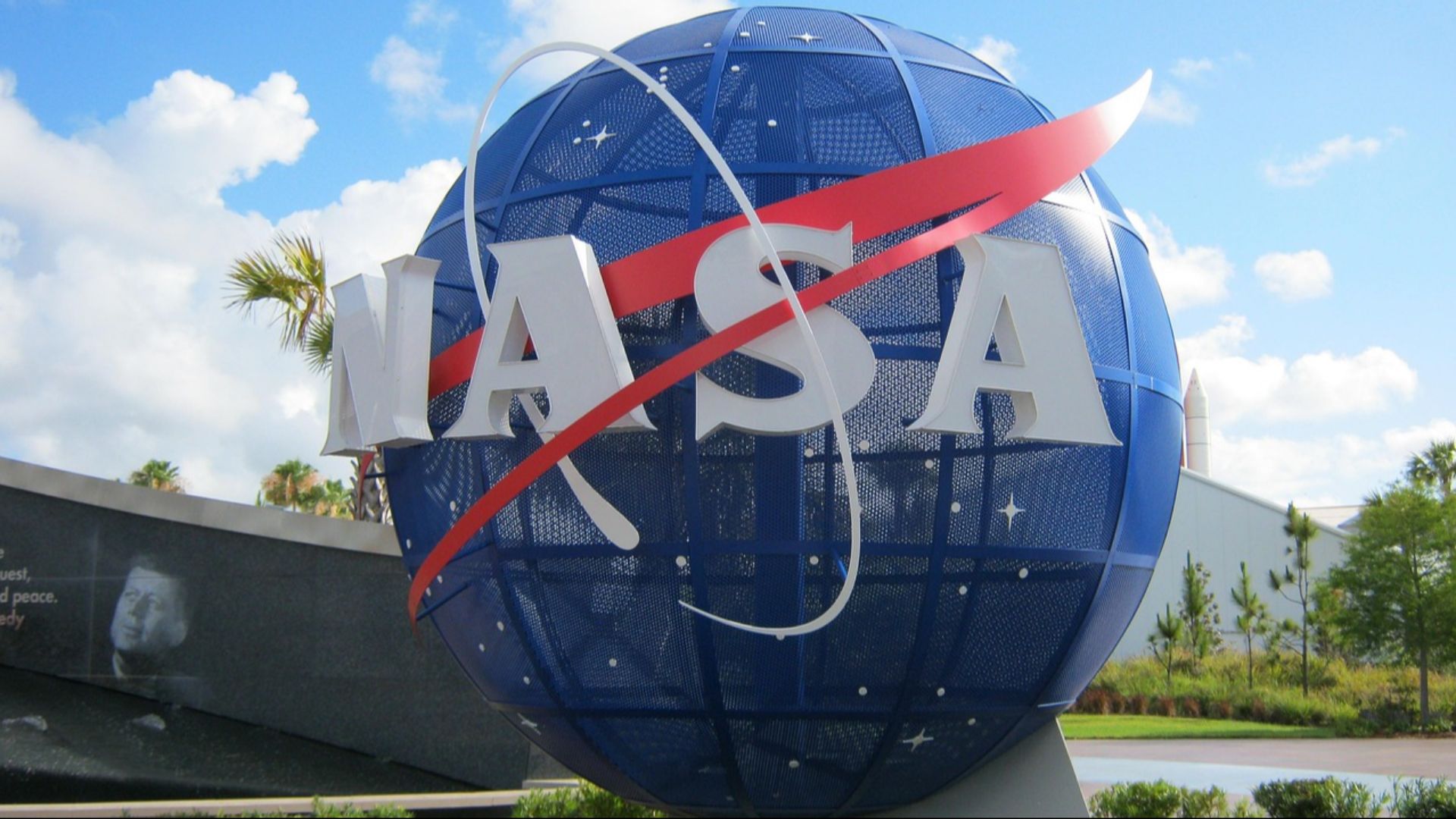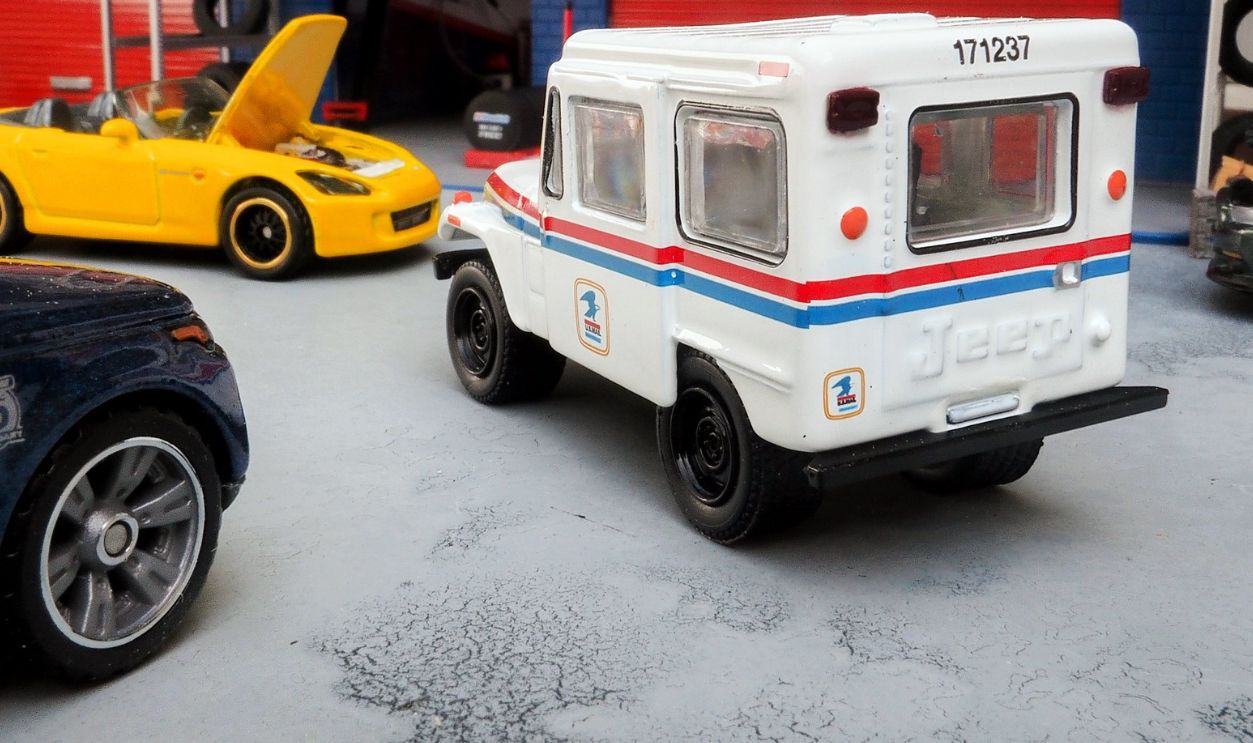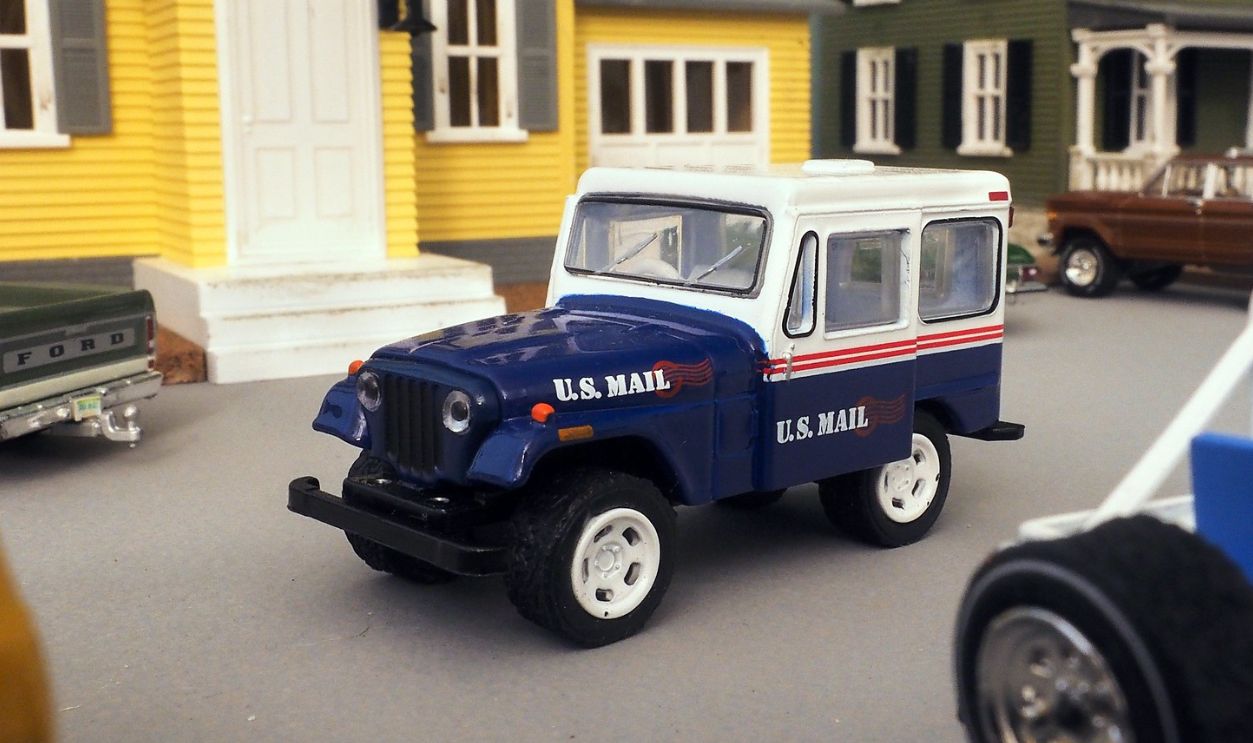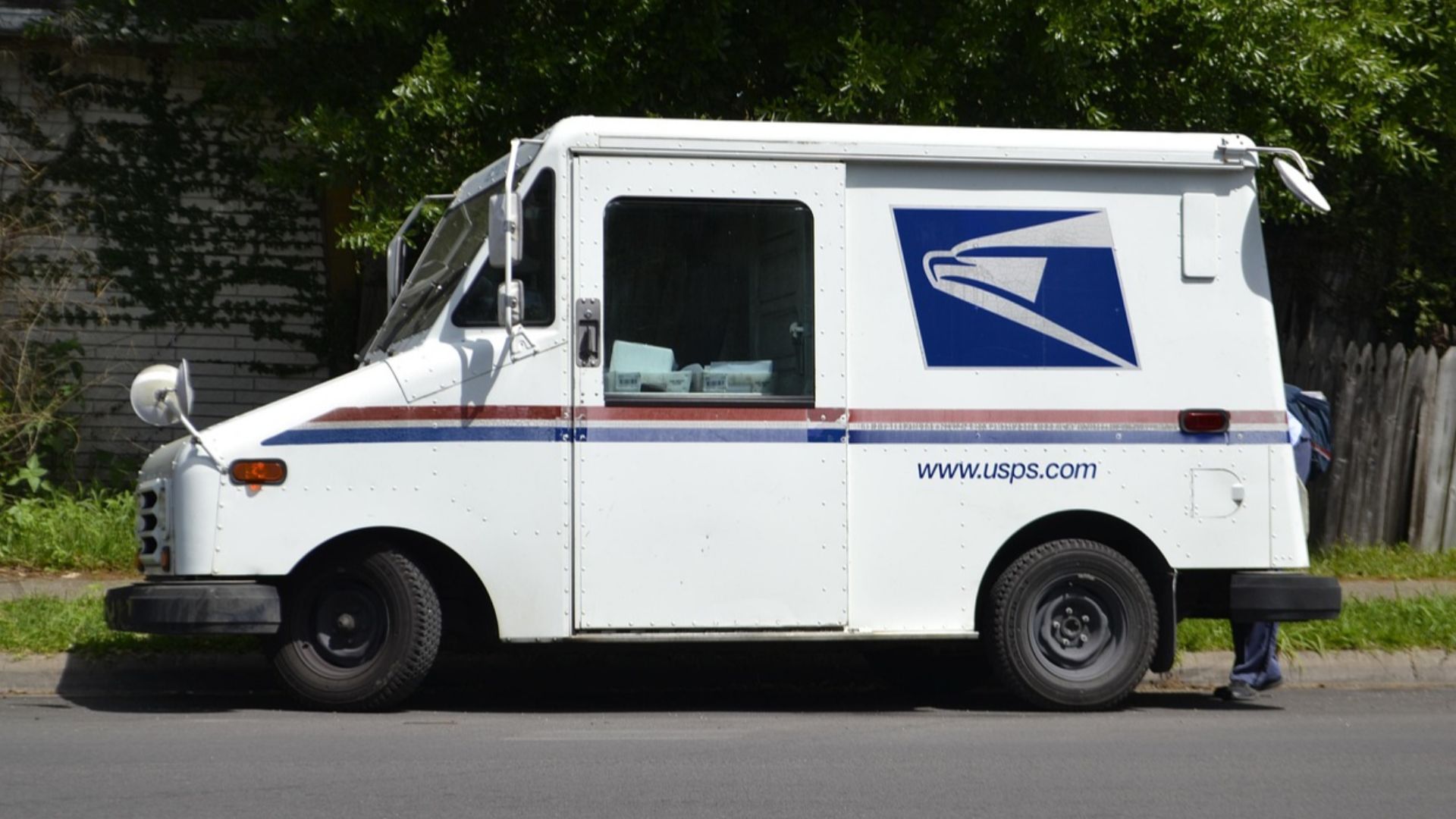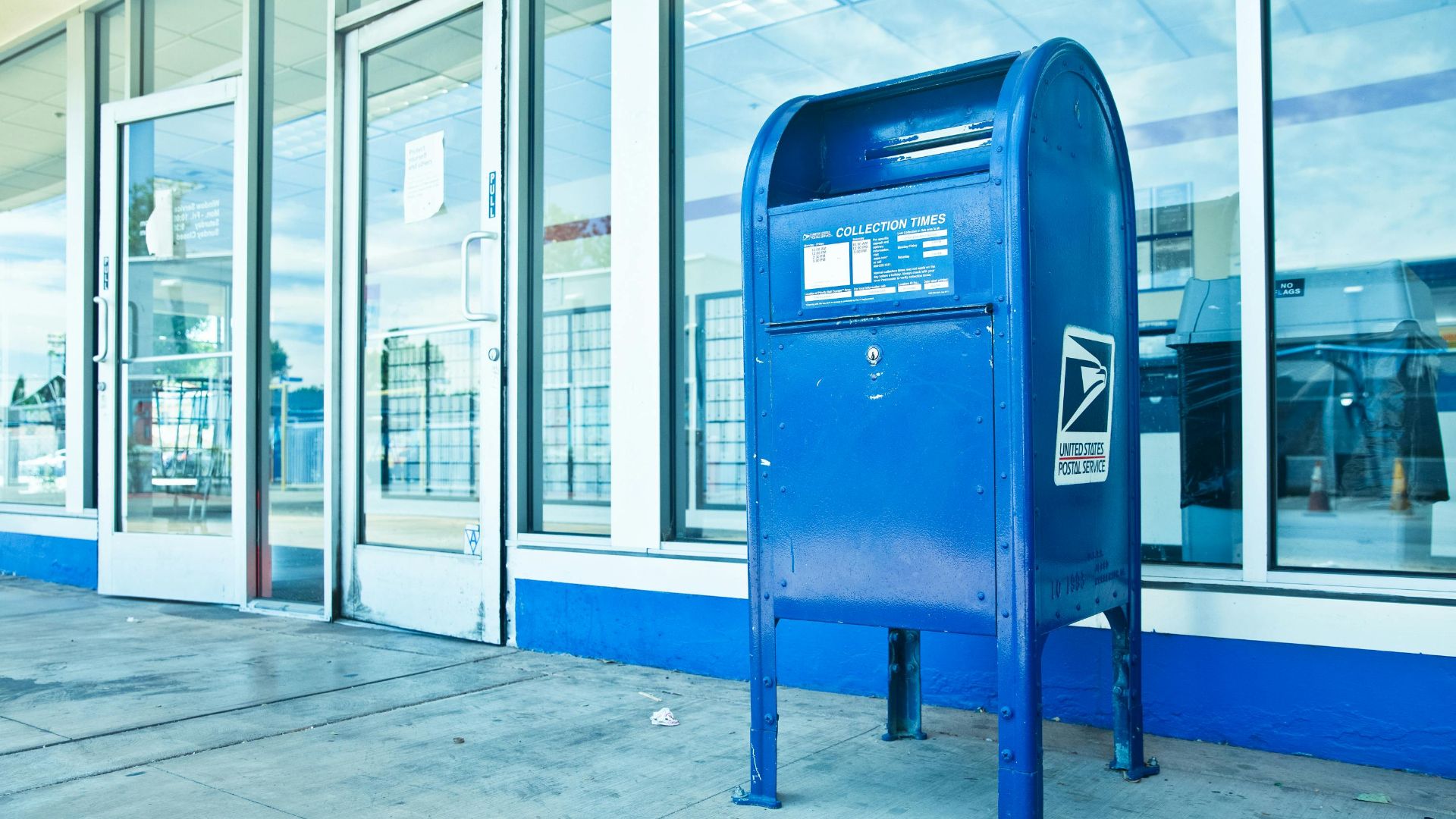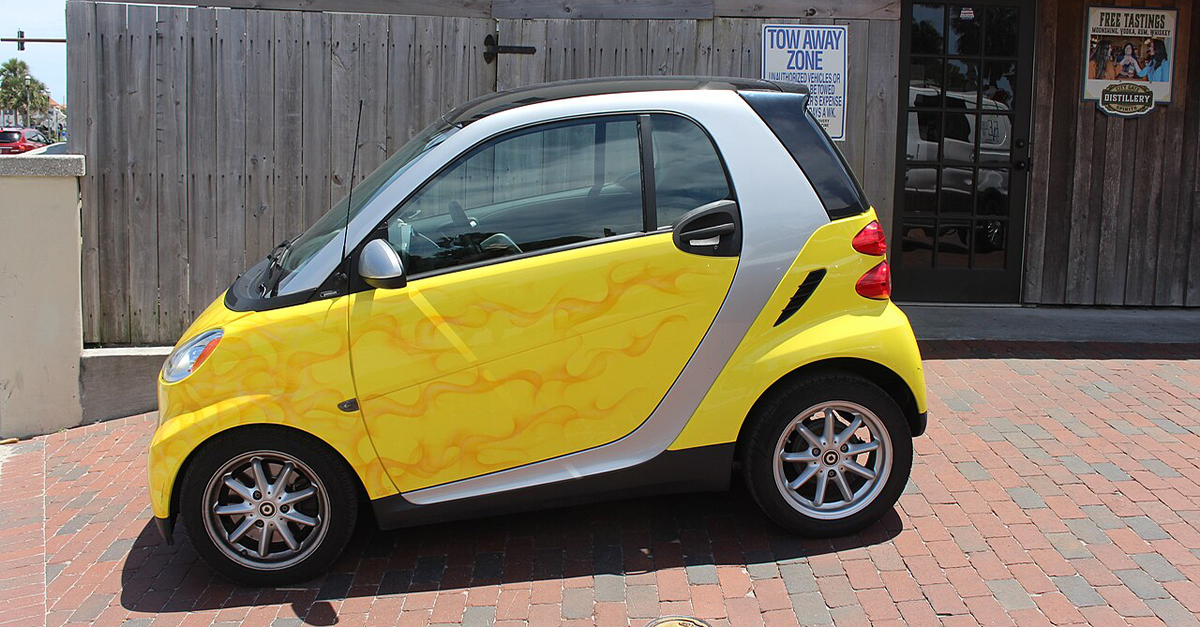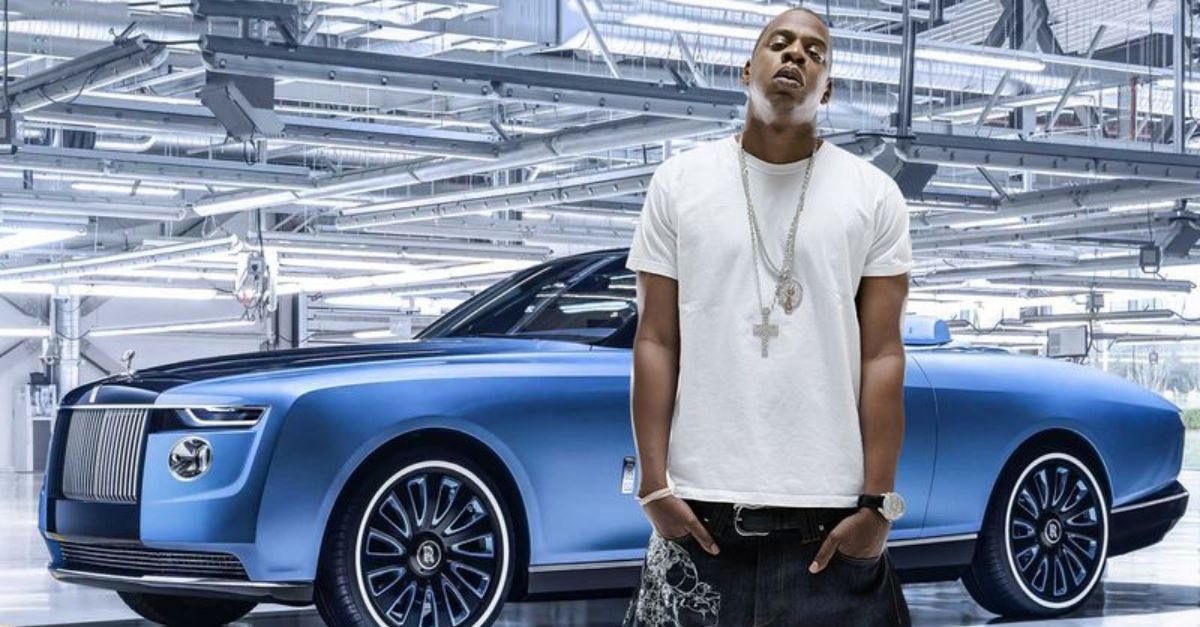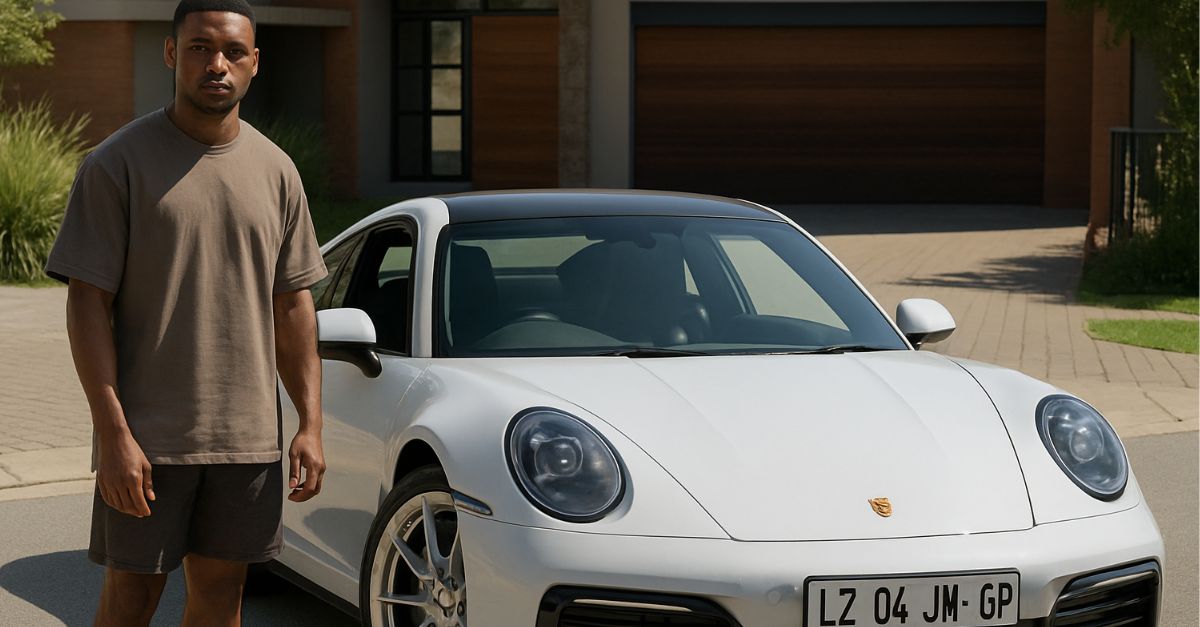When “Neither Snow Nor Rain” Needed Wheels
Before the Grumman LLV became the boxy face of the mail, the U.S. Postal Service leaned hard on American Motors Corporation (AMC) and its Jeep-derived workhorses. This is the story of how AMC—through its AM General subsidiary—supplied thousands of right-hand-drive “Mail Jeeps” that stuffed America’s curbside boxes through the 1970s and into the ’80s.

From Willys To AMC: The Long Road To The Mail Jeep
The basic platform started as the Jeep DJ (“Dispatcher”), a two-wheel-drive variant of the CJ introduced by Willys in 1955. Through corporate handoffs—Willys to Kaiser Jeep to AMC—this utilitarian rig evolved into the dedicated postal vehicle most of us picture when we hear “Mail Jeep.”
Why USPS Needed A New Vehicle In The First Place
By the late 1960s, USPS wanted to replace small, wobbly three-wheelers and a motley mix of light trucks that struggled with snow, payload, and reliability. Standardization—and something sturdier—was the mandate.
The 1968 Shootout: Bronco, Scout… And The Jeep DJ
In 1968 the Post Office ran trials for a light delivery vehicle, evaluating the Ford Bronco, International Harvester Scout, and Jeep’s Dispatcher 100 (DJ-5). The Jeep won the contract, thanks to its low cost, easy serviceability, and USPS-friendly configuration.
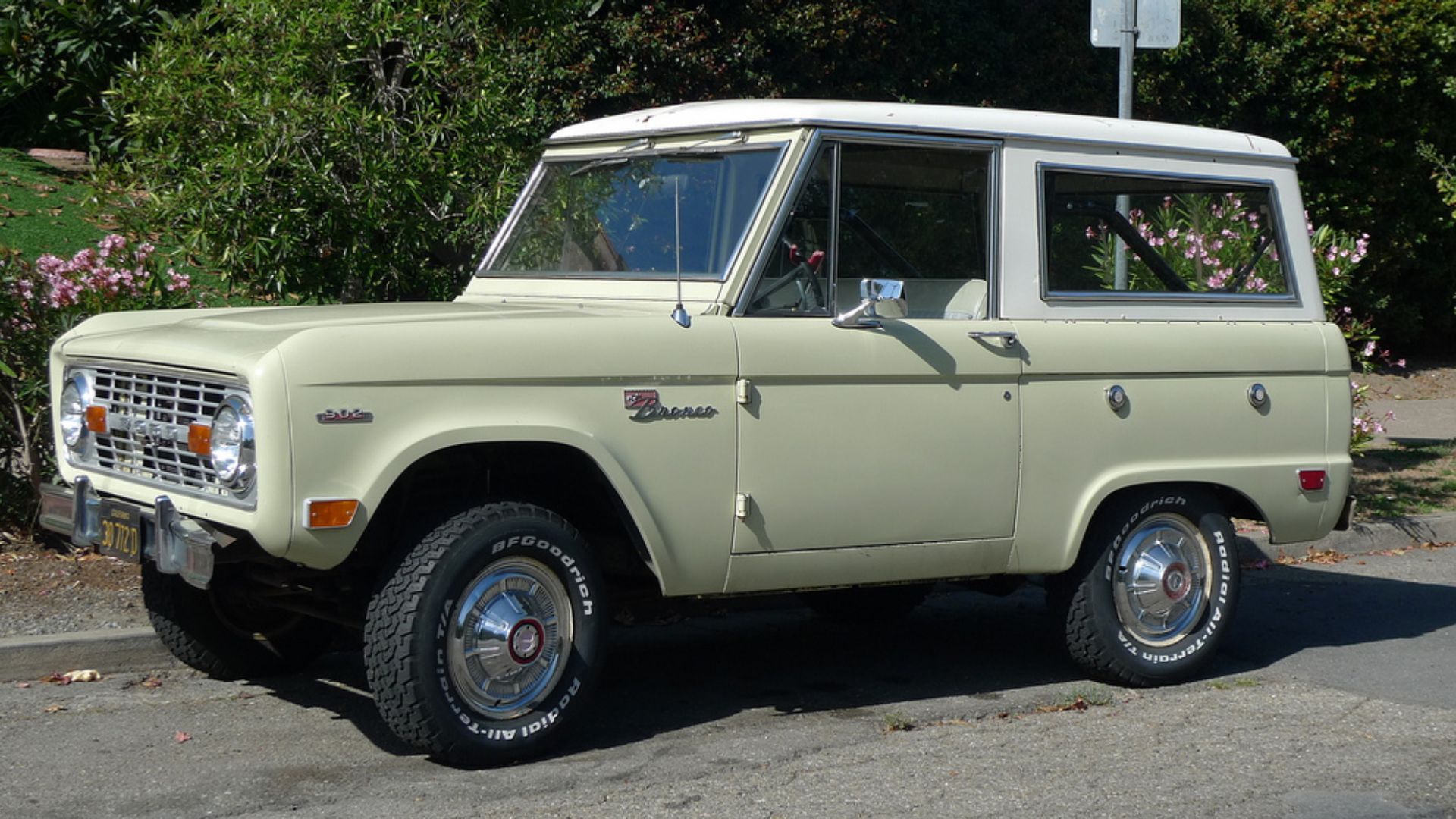 Andrew Duthie from Nashville, TN, USA, Wikimedia Commons
Andrew Duthie from Nashville, TN, USA, Wikimedia Commons
Meet The DJ-5: Purpose-Built For The Route
The DJ-5 formula was simple and smart: a compact, rear-drive chassis; sliding doors; a flat load floor with a built-in mail sorting tray; and crucially, right-hand drive so carriers could reach roadside boxes without stepping into traffic.
Right-Hand Drive: Safety And Speed In One Flip
USPS carriers had long wrestled with left-hand-drive cars on curbside routes. Moving the wheel to the right side cut route times and improved safety by keeping carriers in the vehicle and close to the mailbox. It’s a small change with a huge operational payoff.
AMC Buys Jeep, Births AM General
In 1970 AMC purchased Kaiser-Jeep, and by 1971 it spun Jeep’s government and specialty-vehicle operation into AM General. From its Indiana base, AM General would build the DJ-5 in vast quantities for USPS.
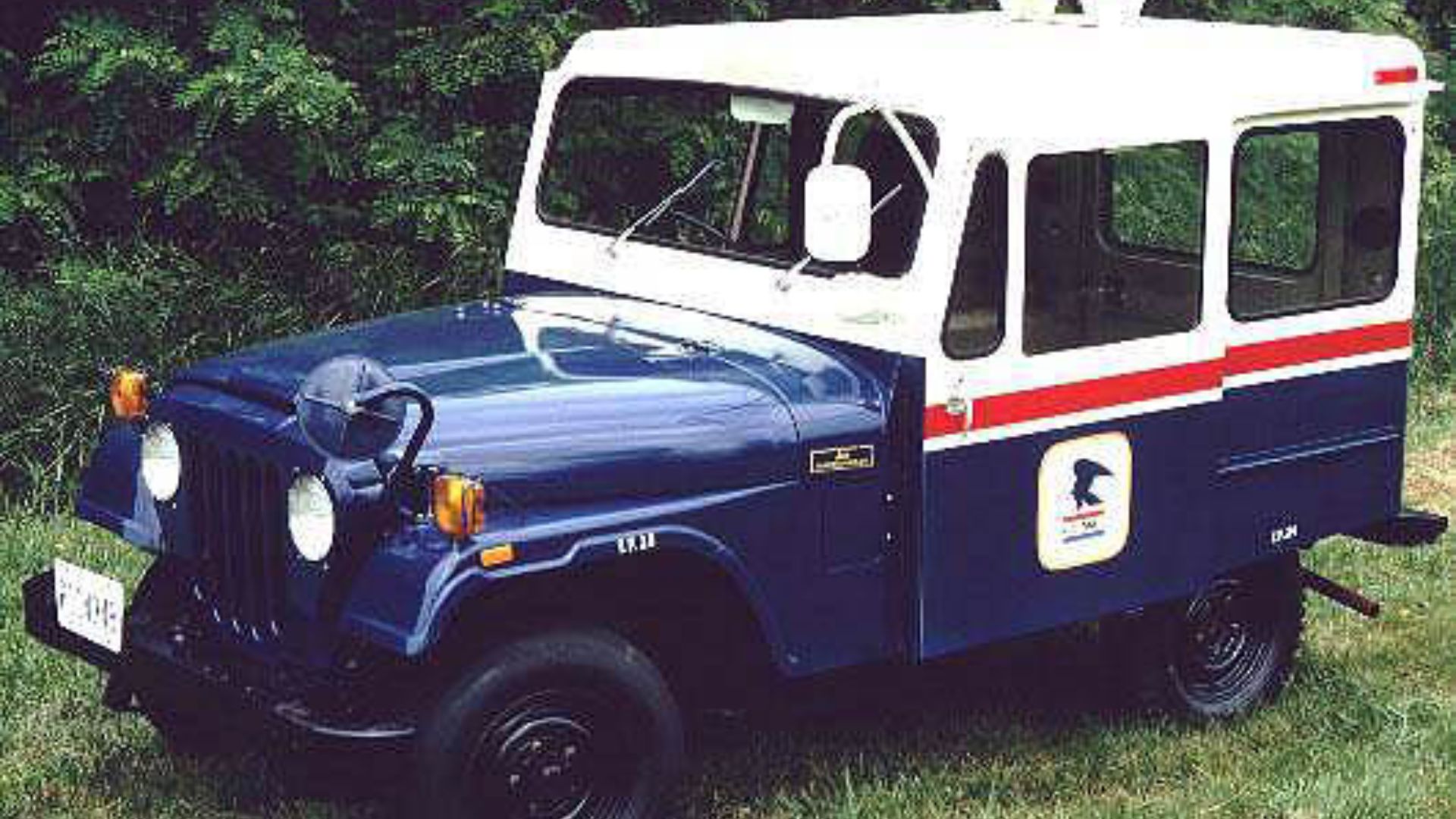 Sixthstar at English Wikipedia, Wikimedia Commons
Sixthstar at English Wikipedia, Wikimedia Commons
Built To A Price, Not A Fantasy
These Mail Jeeps were rugged enough for stop-and-go duty but intentionally basic: minimal creature comforts, limited rustproofing, and (often) no power steering. They were tools—cheap to buy, easy to fix, and configured for one job.
Powertrains: From Chevy Four To AMC Six (And More)
Early postal DJs used a 153-cid Chevrolet four matched to a two-speed Powerglide; after AMC took over, most ran AMC’s 232/258 straight-six with Borg-Warner or TorqueFlite automatics. Later runs experimented with four-cylinders (AMC 150, GM Iron Duke) depending on cost and supply.
The Look: Five-Slot Grille And Stars-And-Stripes Livery
Postal DJs developed a distinctive five-slot grille that protruded to clear larger radiators. Through the 1970s they wore red-white-blue livery; after 1979, USPS shifted to a white scheme with red and blue striping—another reason they stood out on your block.
 United States Postal Service, Wikimedia Commons
United States Postal Service, Wikimedia Commons
Winter Warriors (Mostly)
USPS first deployed DJs heavily in the northern U.S., where those old three-wheelers just couldn’t hack it in ice and snow. The DJ-5, while only two-wheel drive, still offered better stability and capability for year-round delivery.
The Electruck Experiment: AM General’s 1970s EV
Here’s a surprise: long before modern EV vans, AM General built the DJ-5E “Electruck,” an all-electric mail Jeep produced in the mid-1970s. NASA tested it, calling it “state-of-the-art.” Roughly 357 were built, most for polluted urban routes where tailpipe-free delivery was a win.
Under The Skin Of The DJ-5E
The Electruck used a 54-volt lead-acid pack from Gould, a DC traction motor, and regenerative braking. Top speed was around 40 mph, range roughly 29 miles with reserve—enough for many dense city loops. Not fast, but perfect for the postman’s pace.
 Unknown authorUnknown author or not provided, Wikimedia Commons
Unknown authorUnknown author or not provided, Wikimedia Commons
Why AMC/AM General Kept Winning USPS Bids
Price, familiarity, and parts. AM General had existing tooling, a proven chassis, and a nationwide knowledge base. Competing proposals—International Harvester pursued postal contracts repeatedly—struggled to undercut the Jeep-based solution.
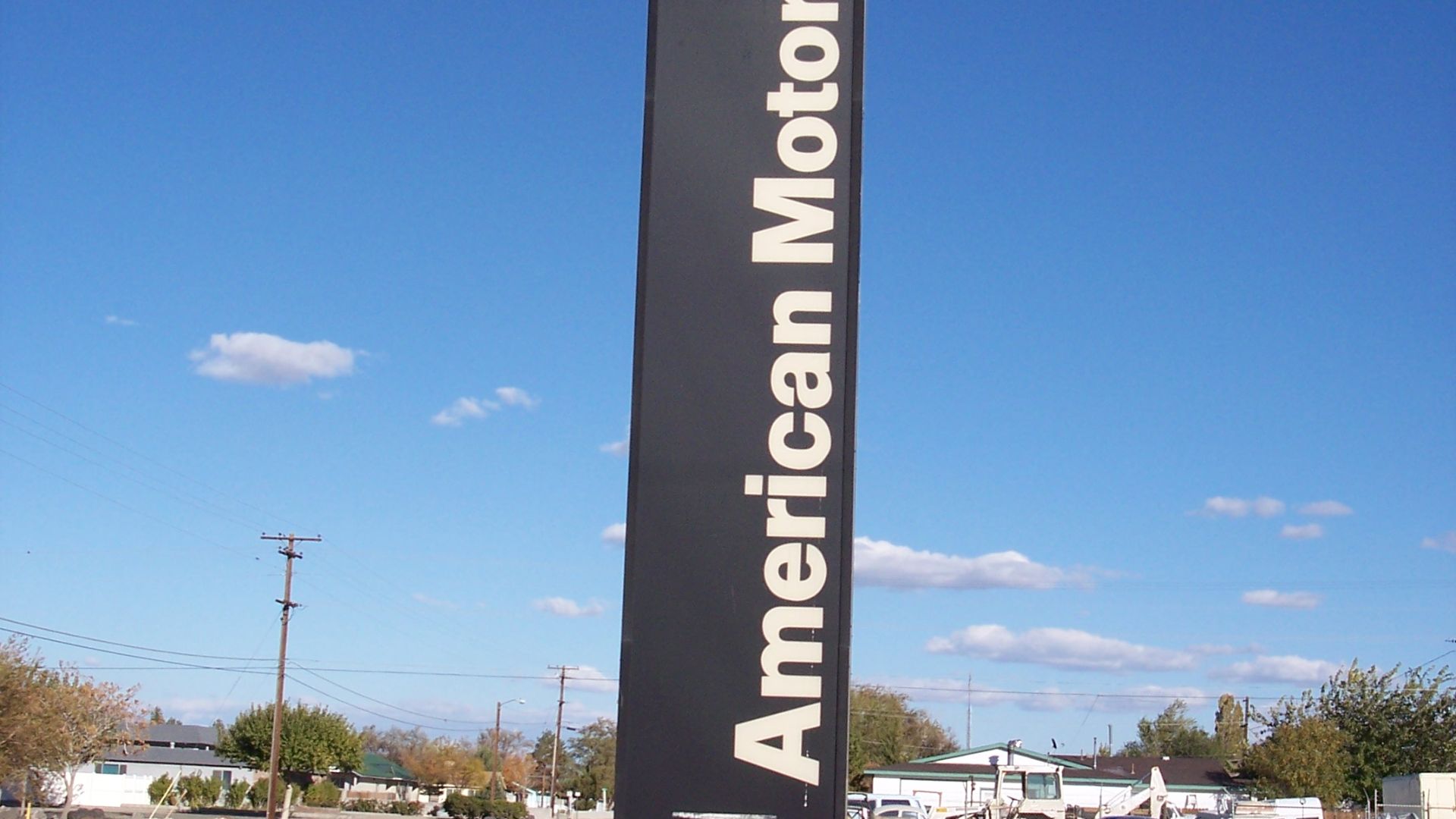 Self (photo); American Motors (logo), Wikimedia Commons
Self (photo); American Motors (logo), Wikimedia Commons
What Carriers Loved (And Didn’t)
Carriers appreciated the easy mailbox reach, the sliding doors that could stay open while creeping along a street, and the huge visibility. They didn’t love the heat or cold (insulation was not a strong suit) and the heavy manual steering on some models. Tool, not toy.
A Fleet Sized For America’s Suburbs
Through the 1970s and early 1980s, the DJ-5 became ubiquitous on suburban routes. Standardization simplified maintenance in big postal motor pools, replacing the patchwork of earlier trucks and trikes with one recognizable silhouette.
Model Alphabet Soup: DJ-5A Through DJ-5M
If you nerd out on codes, the DJ-5 lineage runs A through M, each reflecting engine and transmission changes as suppliers and costs shifted over time—everything from Chevy fours to AMC sixes to VW/Audi-sourced fours, capped by AMC’s own 150-cid four in the final M models.
Why Two-Wheel Drive Worked (Until It Didn’t)
USPS drivers rarely needed trail capability; they needed predictable, low-speed maneuvering and low running costs. Two-wheel drive ticked those boxes—at least until routes grew, parcels got bulkier, and expectations for longevity and ergonomics rose.
The Livery Evolves, But The Mission Doesn’t
From the patriotic mid-century colors to the later white with striping, the DJ-5’s look mirrored USPS branding tweaks. Underneath, the mission was unchanged: stop often, carry a lot, and shrug off curbs, potholes, and endless cycles of start-stop-start.
AMC’s Corporate Crossroads
AMC’s finances were always tight, and by the early 1980s the company had partnered with Renault, even as AM General’s government work continued. That corporate jumble—and changing USPS needs—set the stage for an all-new mail truck concept.
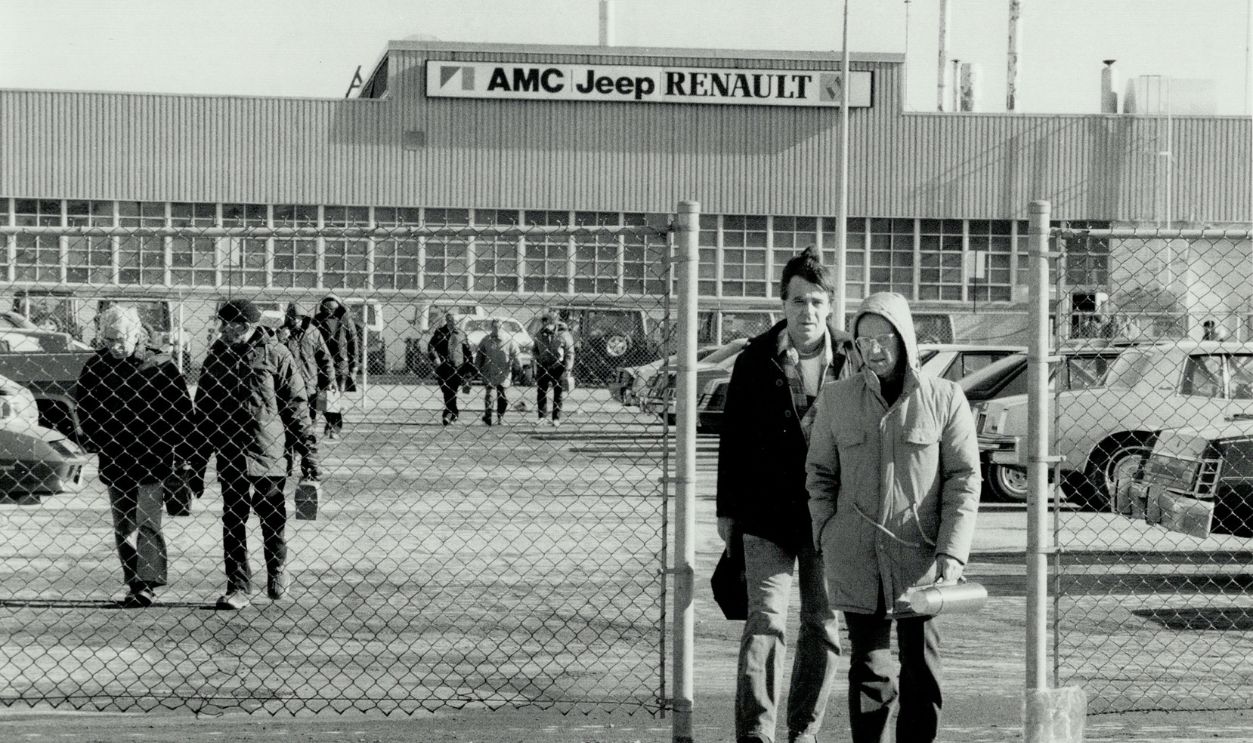 Michael Stuparyk, Getty Images
Michael Stuparyk, Getty Images
USPS Draws Up A Wish List
Instead of adapting an existing vehicle again, USPS in the mid-1980s issued detailed specs for a purpose-built “Long Life Vehicle” with a 24-year target service life. Several teams answered the call, including AM General—this time as a bidder, not the default.
 WhisperToMe, Wikimedia Commons
WhisperToMe, Wikimedia Commons
The End Of The Line: Grumman LLV Wins In 1986
After competitive testing, the Grumman/GM LLV won the contract in April 1986—99,150 units for about $1.1 billion—pushing the DJ-5 toward retirement as the new boxy van rolled into service from 1986 through the early 1990s. The LLV’s official predecessor? The Jeep Dispatcher.
 User Coolcaesar on en.wikipedia, Wikimedia Commons
User Coolcaesar on en.wikipedia, Wikimedia Commons
Why The Fleet Shifted Away From AMCs
USPS wanted durability, corrosion resistance, and standardized components designed around postal duty from day one. The LLV’s aluminum body, common GM parts, and long service target beat repurposed, bargain-bin DJs in the total-cost-of-ownership math.
What Survived (And Where)
Even after LLVs took over, DJs lingered—private carriers sometimes bought them, and a few kept delivering mail on rural routes well into the 2000s. Today, restored DJs pop up at shows, auctions, and quirky car collections, still wearing faded USPS stencils.
Beyond The DJ: Fleetvans And Other Jeep Oddities
The DJ-5 wasn’t Jeep’s only mailroom special. Earlier “Fleetvan” FJ models (FJ-3/FJ-6) also served carriers in the 1960s and early ’70s—boxier and taller, but sharing Jeep DNA and duty with the Dispatchers that followed.
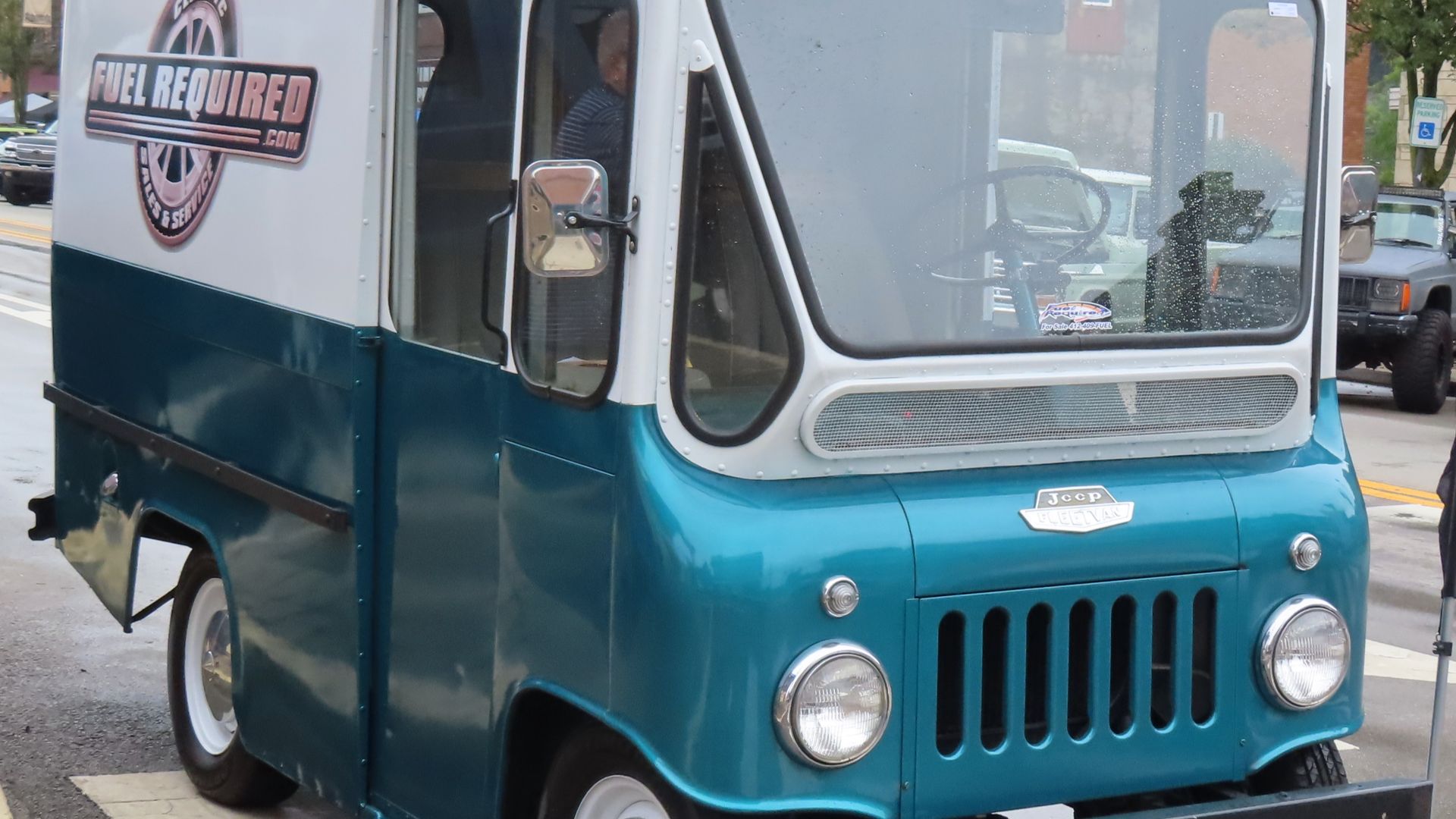 MercurySable99, Wikimedia Commons
MercurySable99, Wikimedia Commons
The Legacy: What AMC Taught USPS (And Vice Versa)
AMC/AM General proved that purpose-tuned, inexpensive platforms could transform day-to-day government work. USPS, by demanding right-hand drive, sliding doors, and built-in sorting capabilities, nudged the industry toward designing around actual use cases—a philosophy that underpins fleet vehicles today.
Closing The Route: Why The Mail Jeep Era Still Matters
So why did the Postal Service once drive a fleet of AMCs? Because AMC—via AM General—offered a simple, affordable tool that fit the job perfectly, from right-hand drive to roll-all-day reliability. The DJs brought order to a chaotic fleet, introduced early EV experiments, and set the template for the purpose-built LLV that replaced them. A humble box of stamped steel and sliding doors became an American icon—proof that sometimes the most memorable cars aren’t fast or flashy; they’re the ones that show up, six days a week, no matter the weather.
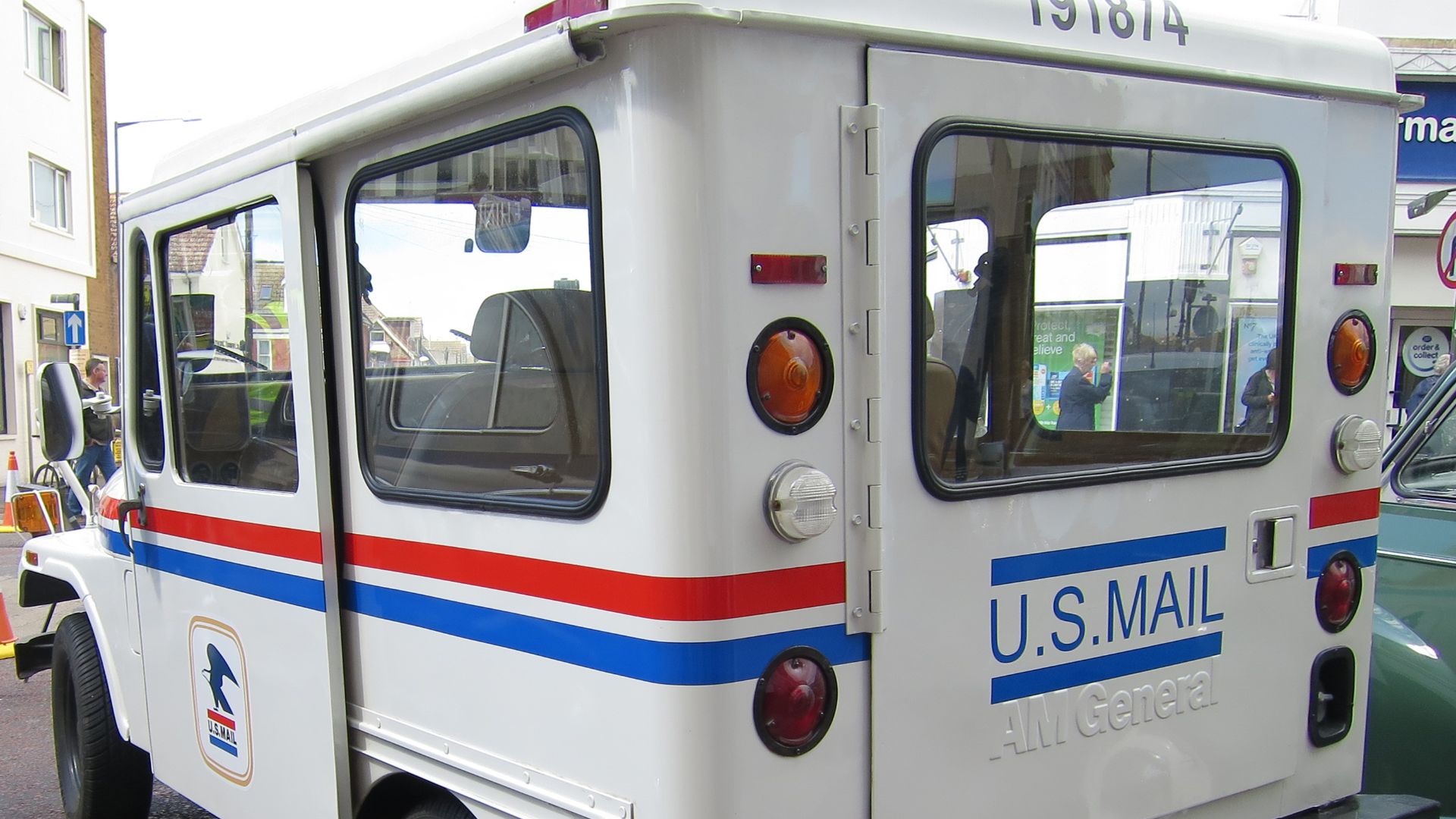 Oast House Archive , Wikimedia Commons
Oast House Archive , Wikimedia Commons
You May Also Like:
Pickup Trucks That Changed The Way America Worked
Ranking The Pickup Trucks That Defined Small-Town America, According To Industry Experts
The 12 Smartest Used Luxury SUV Purchases That American Consumers Can Make

